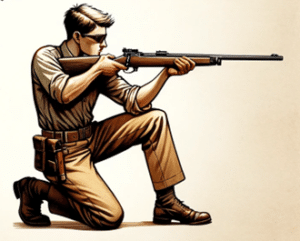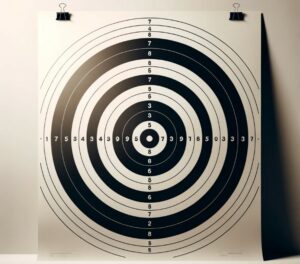
Air rifle shooting is a sport that combines precision, control, and discipline. Whether for competitive shooting, recreation, or honing marksmanship skills, mastering the fundamentals of air rifle shooting is crucial for success and safety. This article aims to introduce beginners to the essential aspects of air rifle shooting, focusing on safety, proper stance, and achieving precision. By understanding and applying these fundamentals, enthusiasts can develop a solid foundation in air rifle shooting, enjoy the sport safely, and achieve their shooting goals. As we explore the basics of air rifle shooting, readers will learn the importance of safe handling, the intricacies of adopting the correct stance, and the techniques to improve accuracy and precision.
Important Safety Information:
| Aspect | Details |
| Handling the Air Rifle | Always point the muzzle in a safe direction, keep the rifle unloaded until ready to use, and keep your finger off the trigger until you are ready to shoot. |
| Eye and Ear Protection | Wear protective eyewear to shield against ricochets and ear protection to guard against the noise of shots, even if air rifles are relatively quiet. |
| Safe Storage and Transportation | Store air rifles and ammunition separately, locked and out of reach of unauthorized persons, especially children. Use a gun safe or locked cabinet for the air rifle. |
| Creating a Safe Shooting Environment | Ensure the shooting area is clear of people and pets. Use a proper backstop to catch pellets and prevent ricochets. Do not shoot at hard surfaces or water. |
Understanding Air Rifle Shooting
Air rifle shooting has a rich history, evolving from simple backyard pastime to a disciplined sport with various competitive formats. It requires a deep understanding of the mechanics of shooting, as well as an appreciation for the responsibility that comes with handling a potentially dangerous weapon. Let’s delve into the types of air rifle shooting and the equipment that shooters need to get started.
A Brief History and Types of Air Rifle Shooting
The sport has roots stretching back to the 19th century, with air rifles being used for both recreation and hunting. Today, air rifle shooting encompasses several disciplines, including target shooting, field target shooting, and biathlon-style events. Target shooting involves firing at stationary targets at varying distances and is known for its emphasis on precision and control. Field target shooting combines the challenge of varying distances with the complexity of shooting in natural settings, requiring shooters to adjust for wind and terrain. Biathlon-style events test both physical endurance and shooting accuracy, with competitors racing against the clock.
Different Types of Air Rifles
Air rifles come in various types, each suited to different aspects of the sport:
- Spring-piston rifles are popular for their simplicity and reliability. They are often recommended for beginners due to their straightforward operation.
- Pre-charged pneumatic (PCP) rifles offer higher accuracy and less recoil, making them a favorite among competitive shooters.
- CO2 rifles use carbon dioxide cartridges for propulsion, providing a consistent shooting experience without the need for manual pumping.
Essential Equipment
Beyond the air rifle itself, shooters will need several pieces of equipment to get started:
- Ammunition: Pellets come in different shapes and sizes, each designed for specific types of shooting.
- Safety gear: Eye and ear protection are essential for safeguarding against potential accidents.
- Targets and backstops: For practice and competition, having the right targets and a safe backstop to catch pellets is crucial.
In understanding air rifle shooting, it’s clear that the sport is as diverse as it is engaging. With the right equipment and a commitment to learning the fundamentals, anyone can enjoy the challenge and satisfaction that comes from mastering air rifle shooting.
The Paramount Importance of Safety
Safety is the cornerstone of air rifle shooting. It ensures not only the well-being of the shooter but also that of spectators and the environment. Adhering to strict safety protocols is essential, regardless of a shooter’s experience level. This section delves into the fundamental safety rules, the significance of protective gear, and tips for creating a secure shooting environment.
Comprehensive Guide to Air Rifle Safety Rules
- Always Treat the Air Rifle as if It Is Loaded: This cardinal rule helps prevent accidental discharge. Even if you are certain the rifle is unloaded, handling it with the utmost care encourages a consistent safety mindset.
- Be Aware of the Muzzle’s Direction at All Times: Only point the air rifle at something you intend to shoot. Ensuring the muzzle is directed towards a safe direction minimizes risks of unintentional harm.
- Finger Off the Trigger Until Ready to Shoot: Keep your finger away from the trigger until your sights are on target and you have made the conscious decision to shoot. This prevents accidental firings.
- Identify Your Target and What’s Beyond It: Before taking a shot, be certain of your target’s identity and aware of what lies beyond it. Bullets can travel significant distances, so knowing the backdrop is crucial for preventing accidents.
- Use Correct Ammunition: Always use ammunition that matches the specifications of your air rifle. Incorrect ammunition can lead to dangerous malfunctions.
- Maintain and Check Your Equipment Regularly: A well-maintained rifle is a safer rifle. Regular checks for wear and tear, especially before use, can catch potential issues before they lead to safety hazards.
The Role of Eye and Ear Protection
- Eye Protection: Air rifle shooting can produce debris and ricochets, posing a risk to the eyes. Safety glasses should be worn at all times to shield against these dangers.
- Ear Protection: While air rifles are generally quieter than their firearm counterparts, certain types can emit noise levels that may be harmful over time. Using ear protection in these instances is wise, especially during prolonged shooting sessions.
Creating a Safe Shooting Environment
- Setting Up a Safe Range: Ensure the shooting area is well-defined with a clear line of fire and a suitable backstop to safely stop and contain pellets.
- Informing Others of Shooting Activities: Letting people know when and where you’ll be shooting helps avoid misunderstandings and keeps everyone informed of the activities taking place.
- Storing Air Rifles and Ammunition Securely: When not in use, air rifles and ammunition should be stored separately, in locked containers, away from unauthorized users, especially children.
Safety in air rifle shooting cannot be overstated. By adhering to these guidelines, shooters not only protect themselves and others but also contribute to a culture of responsibility and respect within the sport. This foundation of safety ensures that the enjoyment and practice of air rifle shooting can continue without incident, laying the groundwork for all other aspects of the sport to be built upon.
Mastering the Stance
The stance you adopt while shooting an air rifle is foundational to your success in the sport. A proper stance not only provides the stability needed for accurate shooting but also ensures that you can shoot comfortably and safely over extended periods. Here’s how to master your stance for air rifle shooting.
The Ideal Shooting Stance
The key to a good shooting stance is balance and stability. Your body should act as a platform for the rifle, minimizing movement to ensure consistent accuracy.
- For standing shots, your feet should be shoulder-width apart, with one foot slightly forward to provide balance. Your body weight should be evenly distributed, or slightly more on your front foot, depending on comfort and stability.
- Kneeling positions require one knee on the ground (usually the non-dominant leg) and the other foot flat on the ground, providing a stable base for your elbow to rest.

- Prone positions are the most stable, with the shooter lying flat on their stomach, legs straight and slightly apart, and both elbows on the ground to support the rifle.
Consistency is Key
The most important aspect of your stance is consistency. Every time you shoot, aim to replicate your stance as closely as possible. This consistency will lead to improved accuracy over time.
Exercises for Stability and Balance
To enhance your shooting stance, consider incorporating exercises into your routine that improve balance and stability. Yoga and pilates are excellent for building core strength, while exercises like squats and lunges can improve leg stability.
Aiming for Precision
Precision in air rifle shooting is the culmination of mastering several key skills. Here’s how to refine your aim and enhance your shooting precision.
Understanding Sight Alignment
The first step to accurate shooting is proper sight alignment. Whether you’re using iron sights or an optical scope, aligning your sights with the target is crucial.
- Iron sights require you to line up the rear and front sights with the target, ensuring each component is in perfect alignment.
- Optical sights simplify aiming by providing a reticle or crosshair to place over your target, but focusing on the reticle and target simultaneously is essential for accuracy.
Breath Control
Breath control is a critical component of precision shooting. Inhale and exhale slowly, and shoot at the natural pause between breaths. This moment of stillness is when your body is most stable, ideal for squeezing the trigger.
Trigger Control
Trigger control is the final piece of the precision puzzle. A smooth, consistent pull directly back towards you, without jerking or hesitating, will prevent the rifle from moving off-target.
- Practice dry firing (shooting without ammunition) to get a feel for the trigger.
- Focus on applying steady pressure until the shot fires, keeping your aim steady throughout.
By focusing on these aspects of shooting technique, you can significantly improve your accuracy and precision. Remember, precision in air rifle shooting is not just about hitting the target but doing so consistently. Practice, patience, and attention to detail in your stance and aiming technique are your best tools for success.
Practice Makes Perfect
Developing proficiency in air rifle shooting requires consistent and focused practice. By dedicating time to refine your skills and address areas for improvement, you can elevate your shooting performance. Here’s how to create an effective practice routine.
Developing a Practice Routine
A structured practice routine is essential for progress. Start with a warm-up session that focuses on your stance and breathing techniques, followed by drills that target specific skills such as sight alignment and trigger control.
- Drills for Precision: Set up targets at varying distances to practice your accuracy. Use different shooting positions to challenge yourself and improve adaptability.

- Consistency Drills: Shoot multiple rounds at a single target to practice consistency in your aiming and shooting technique. Analyze the pattern of hits to identify areas for improvement.
The Role of Mental Preparation
Mental preparation is as crucial as physical practice. Visualization techniques, where you mentally rehearse your shooting process and visualize success, can significantly enhance your performance.
- Visualization: Before shooting, close your eyes and visualize the perfect shot, from your stance to the moment the pellet hits the target. This mental rehearsal can help improve focus and reduce anxiety.
Keeping a Shooting Log
Maintain a logbook of your practice sessions, including notes on what you worked on, the outcomes, and any observations about your performance. This record can be invaluable for tracking progress and identifying patterns or areas needing attention.
Joining the Community
Air rifle shooting is not just about individual practice; it’s also about being part of a community. Engaging with fellow shooters and participating in events can enhance your skills, provide valuable learning opportunities, and make the experience more enjoyable.
Finding Local Clubs and Ranges
Look for air rifle clubs and ranges in your area. These places often offer structured courses, competitions, and the chance to learn from experienced shooters. Joining a club can also give you access to better facilities and equipment.
- Competitions: Participating in competitions is a great way to test your skills, meet other shooters, and experience the sport in a new way. Competitions can range from local club matches to national championships.
Online Resources and Continued Learning
The internet is a treasure trove of resources for air rifle enthusiasts. Online forums, tutorials, and articles can provide tips, advice, and the latest news in the world of air rifle shooting.
- Online Communities: Platforms like Reddit, shooting forums, and social media groups can connect you with a global community of air rifle enthusiasts.
Conclusion
By diligently practicing, engaging with the air rifle shooting community, and continuously seeking opportunities for improvement, you can master the fundamentals of air rifle shooting. The journey to becoming a proficient air rifle shooter is both challenging and rewarding, offering endless opportunities for personal growth and achievement.






